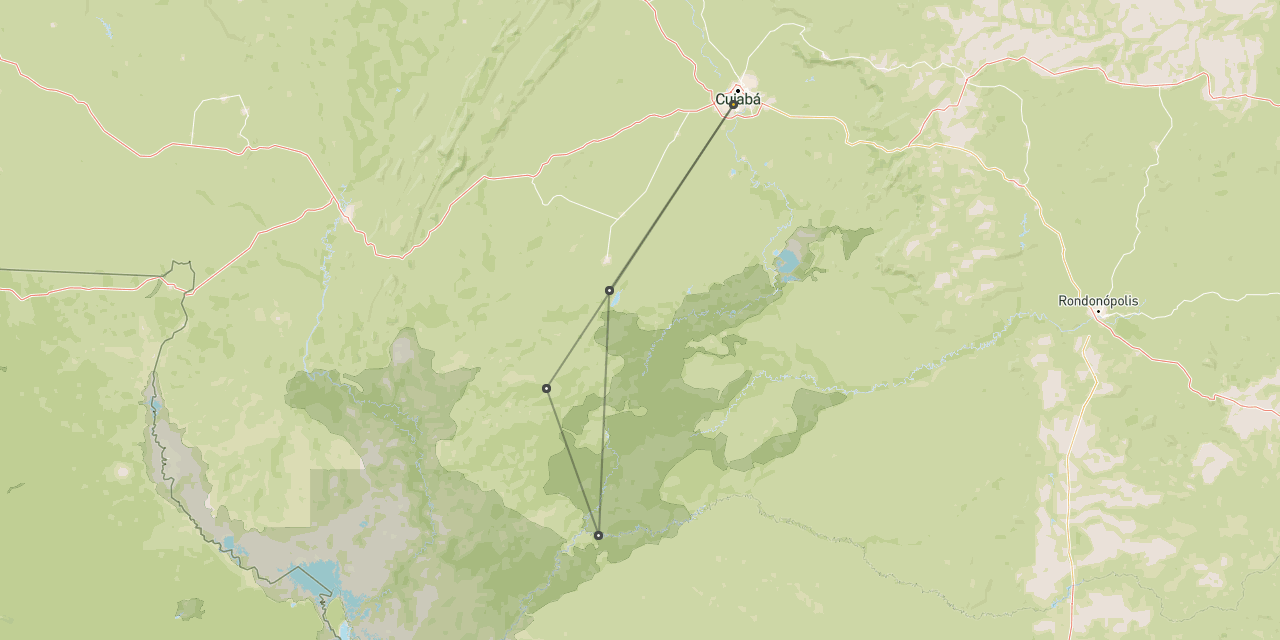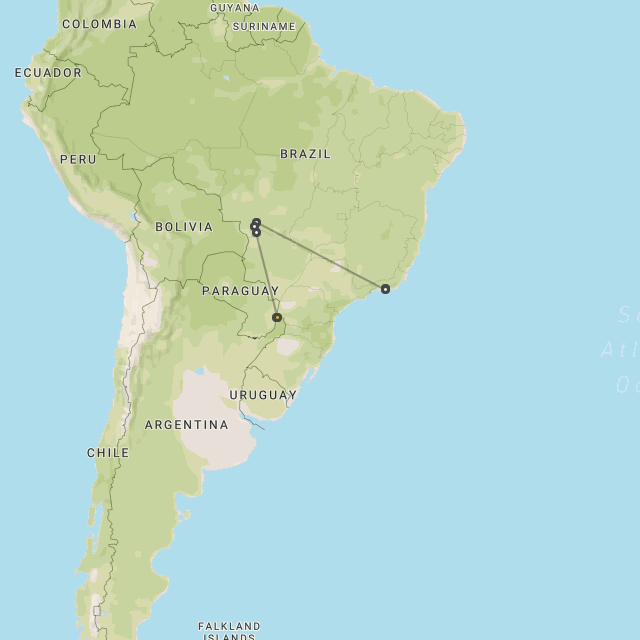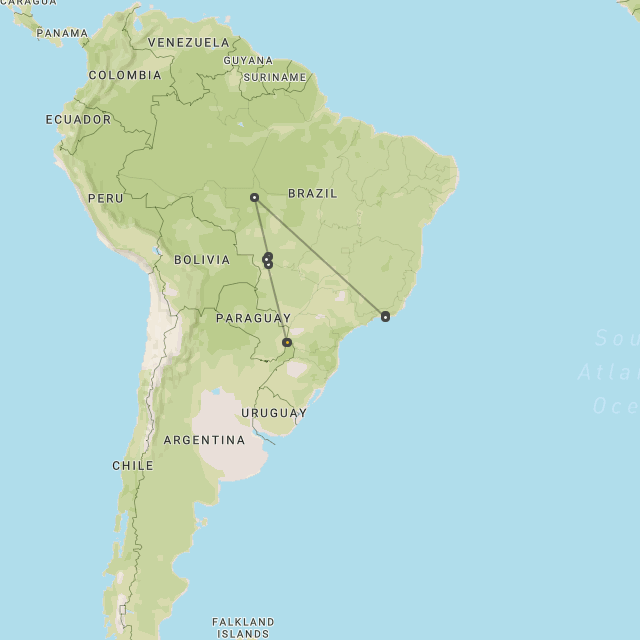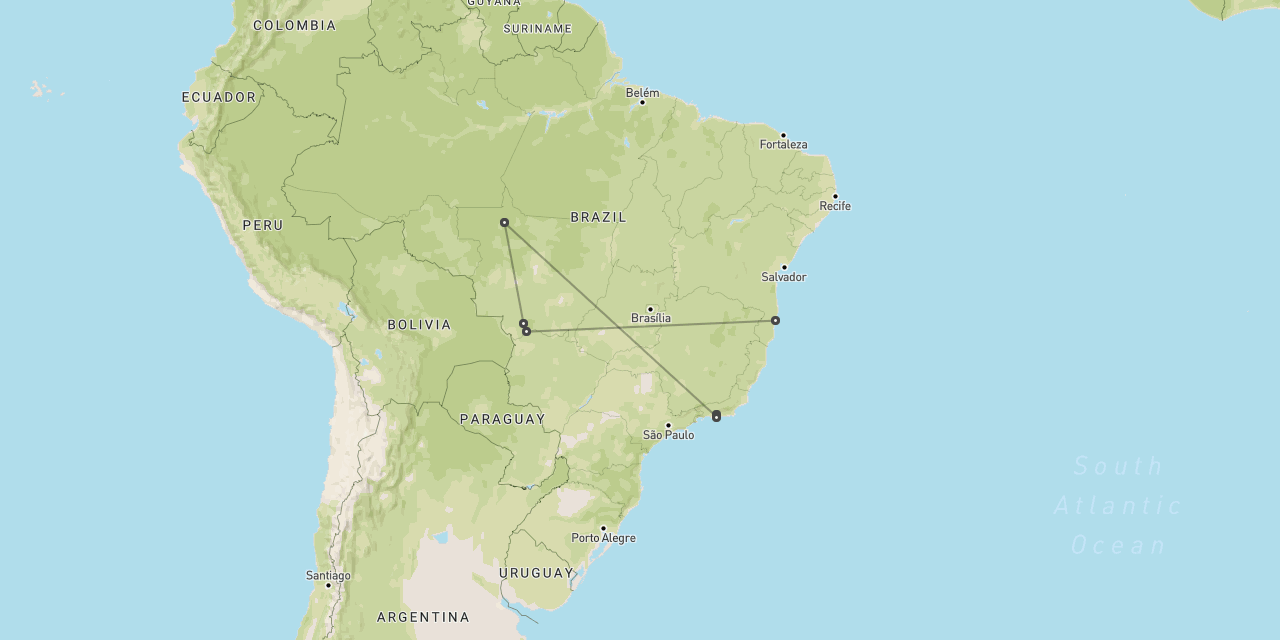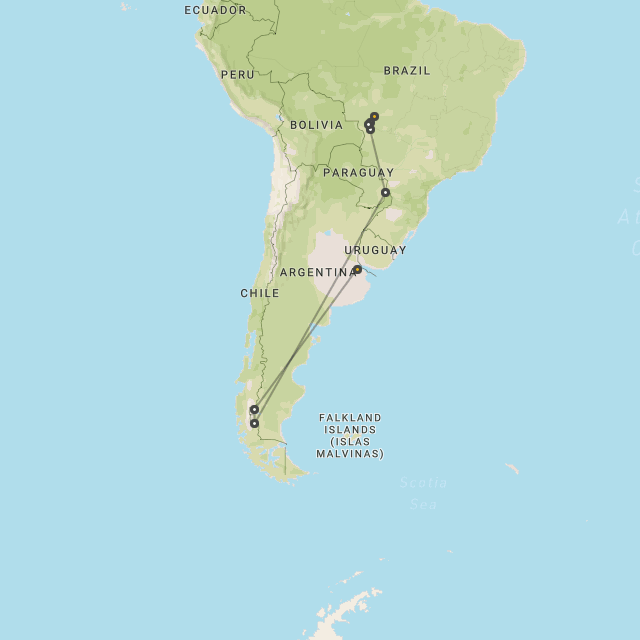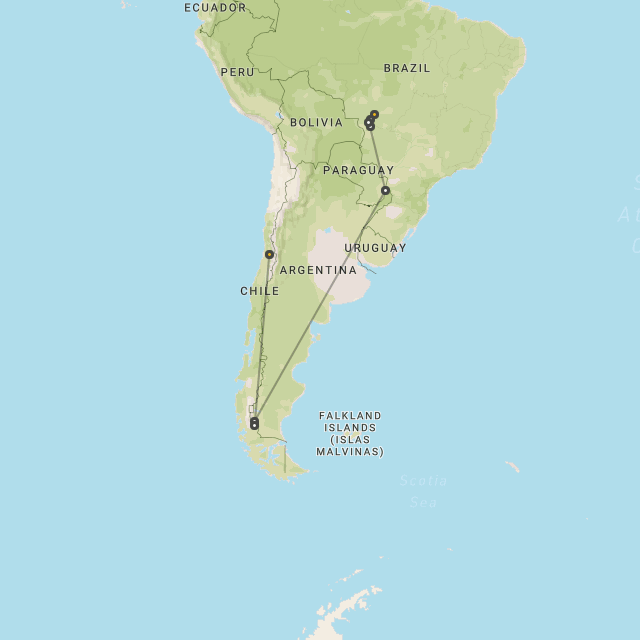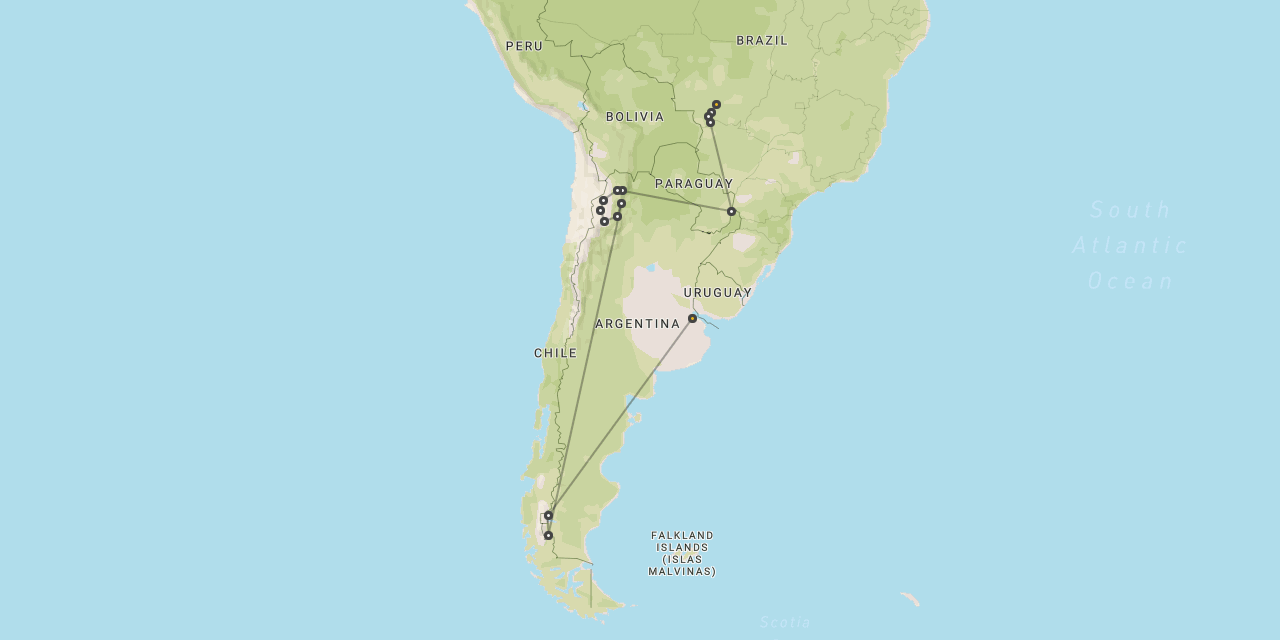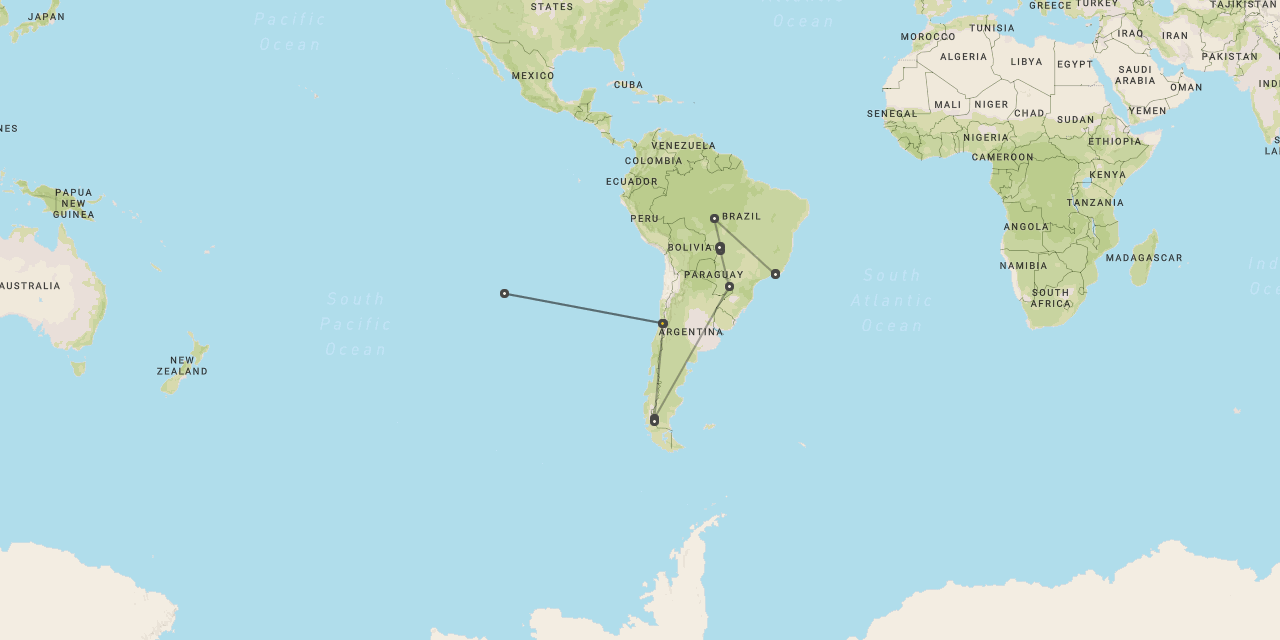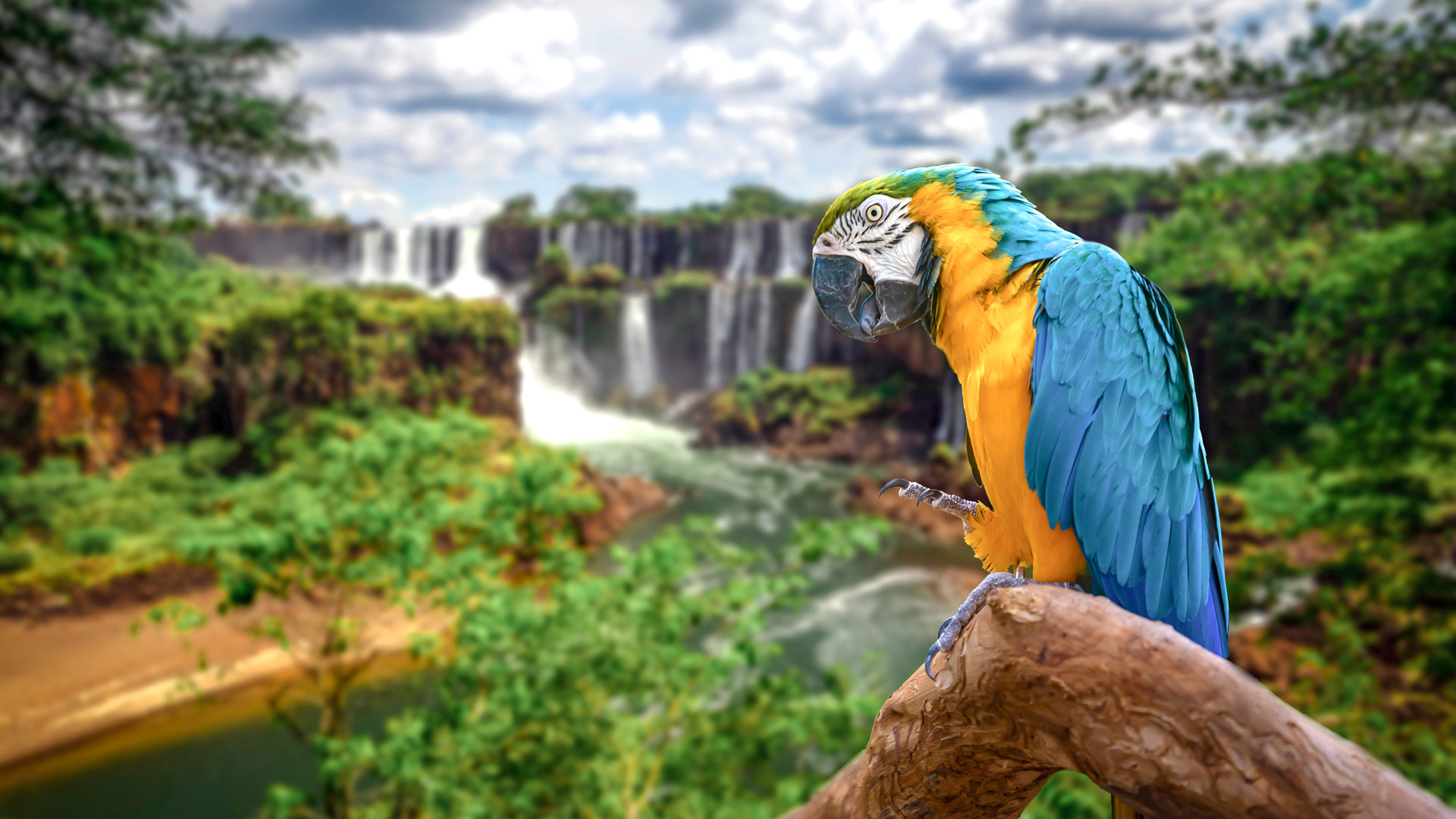
Safari in Brazil
Brazil
is a massive country
dominated by the Amazon
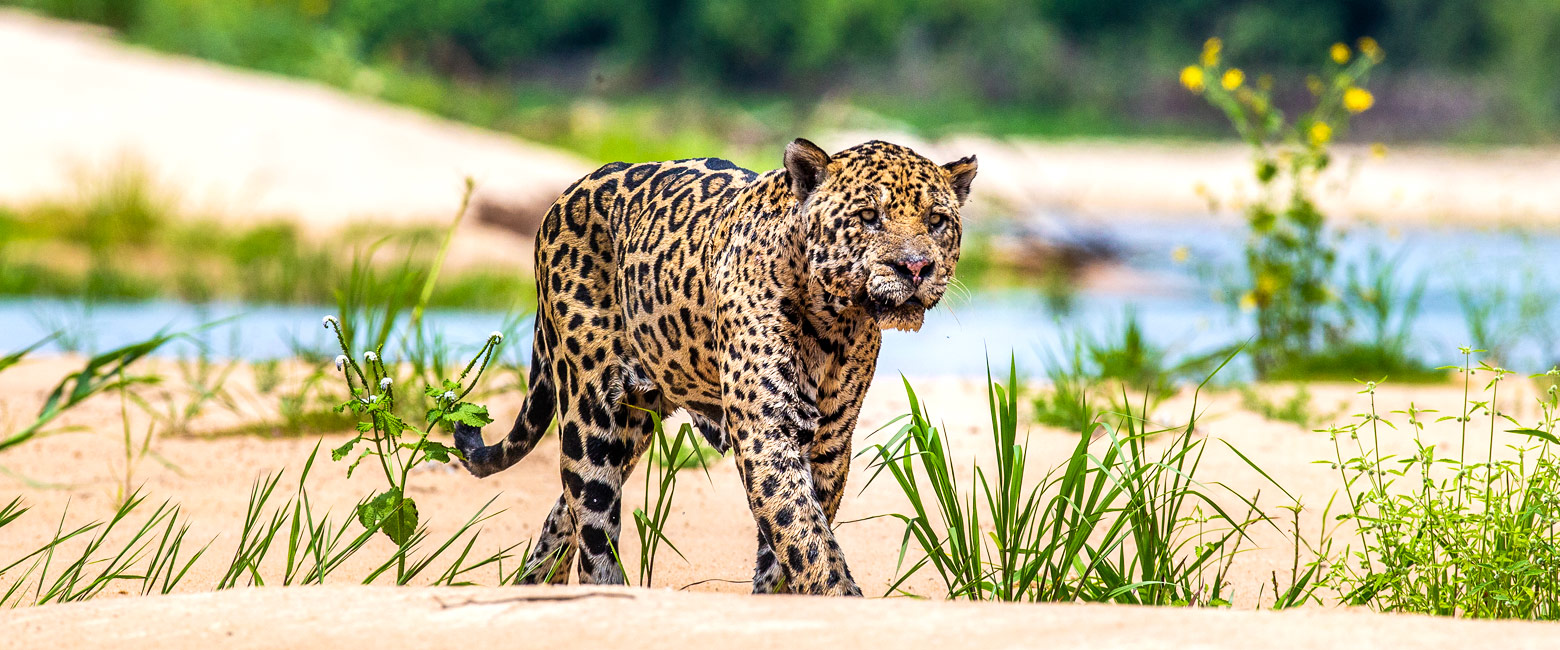
a diversity of rainforests, beaches and wetlands
Brazil is the fifth largest country in the world (after Russia, Antarctica, Canada, China and USA) and, with a remarkable 210 million people, is the sixth most populous county in the world (after China, USA, Indian, Indonesia and Pakistan).
This is a very big place.
It therefore comes as quite a surprise to discover quite how few places around the country receive significant numbers of international travellers. The vast majority of people tend to visit the same half dozen locations.
Of course that greatly heightens the need to visit these places well.
Unusually, the number one destination in Brazil is actually a city, the remarkable Rio de Janeiro, whose famous landmarks and beaches tend to feature in an incredibly high proportion of trips.
Close behind comes the iconic Iguacu Falls, certainly one of the greatest natural wonders in the world. Being located on the border with Argentina, a visit here opens up all kinds of opportunities for cross-border trips.
Next we come to the great wildernesses of the interior.
The Manaus Amazon area offers wonderful opportunities to explore these remarkable rainforests by boat, usually focusing more on the Rio Negro tributary than the main river, where there are lost cities and remote tribes, as well as some rare and unusual species of primates and tropical birds.
But it’s in the vast wetland of the Pantanal, further to the south, which is likely to deliver more serious wildlife encounters, notably including reliable jaguar sightings, plus giant anteaters and giant otters, as well as further exotic primate and bird species.
The third great wildlife area is the very little-known Nascentes do Parnaíba, a scenic area of dry forest, where highlights include virtually guaranteed sightings of endangered maned wolves and the famous tool-using capuchin monkeys.
Finally we come to the tropical coast. Despite running for over 5000 km (3000 miles), the coastline of Brazil has surprisingly few really alluring lodge options. But we have managed to uncover a dozen or so.
The easiest beach areas to include in a trip are usually those close to Rio de Janeiro. If you’re into hiking, then the Costa Verde (to the south) is surprisingly remote and very beautiful. If you prefer a classy Mediterranean-style beach area, then Buzios (to the north) is an easy choice.
Around 1000 km further north, the tropical Costa Bahia includes the entrancing former capital city of Salvador and several rather cool beach lodges, especially around the hip village of Trancoso.
In the far northeast lies the sociable kite-surfing hangout of Jericoacoara and the very remote islands of Fernando De Noronha, which are renowned for their rich marine life and excellent diving.
As an outsider, it’s easy to think of the whole of South America as being a largely tropical place. Whilst this is definitely true of the whole of Brazil, other countries like Argentina, Chile, Bolivia and Peru have a much wider range of climates, all the way through to almost Arctic. So Brazil is the place to visit if you love warmer and more humid weather.
The national character is also noticeably warmer. The people are very sociable, they love coming together in the evenings to chat, drink, eat and dance. Of course this all reaches fever pitch during the carnival season in February, when cities like Rio and Salvador host some of the biggest and most flamboyant parties on the planet.
If you are into beaches and marine activities, then chances are there will be more than enough options for you to spend the whole of your trip in Brazil. But if you want to travel more widely, then the country can combine well with Argentina, Chile, Bolivia, Peru, Ecuador and Colombia.
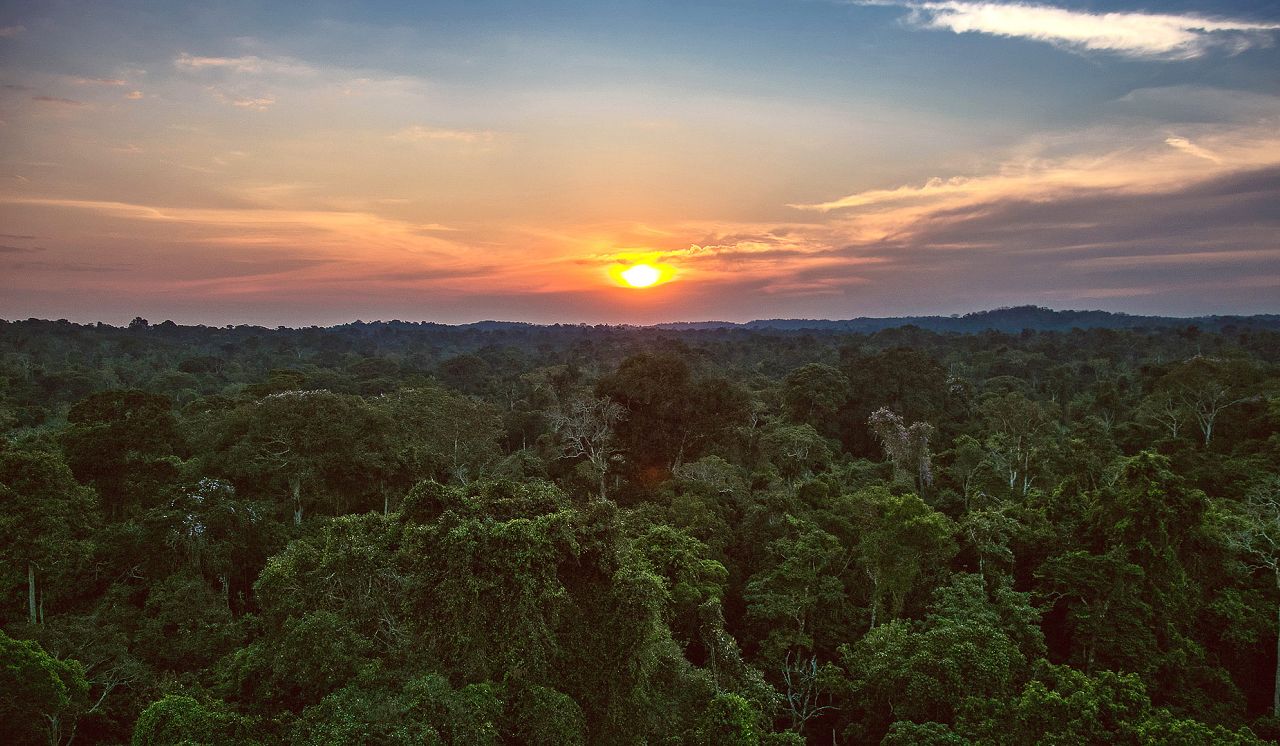
Gallery
Map
The best time to visit Brazil is generally considered to be during Jun-Oct, which represents the tropical dry season.
The very best months are probably June and October, which sit either side of the main international visitor season and offer the chance of higher water flows at Iguacu Falls.
This optimum season more or less coincides with the best time to visit all of the more northerly countries on the continent, including Bolivia, Peru, Ecuador and Colombia.
However this season is in complete contradiction with the recommended period of Oct-Apr in the more southerly countries of Argentina and Chile, which represents the southern hemisphere summer season. Combinations of Brazil and these countries usually tend to be done during the shoulder seasons of Apr-Jun and Sep-Nov, but that very much depends on the specific mix of places that you want to include and the wildlife that you want to encounter.
International flights
Brazil has a number of major airports which serve as international flight hubs, notably Rio de Janeiro, São Paulo, Brasília, Belo Horizonte and Salvador.
Most visitors tend to start their trips by flying into Rio de Janeiro, staying for a few nights before continuing on to other locations.
When combining Brazil with Argentina, whilst there are direct flights from Rio de Janeiro and São Paulo to Buenos Aires, it’s actually more common to fly to the Iguacu Falls and cross the land border there, before continuing on domestic flights.
When combining Brazil with other countries in South America, it’s usual to fly between major city hubs in the usual way. One occasional exception is when connecting by boat along the Amazon River directly into Colombia and Peru.
Internal flights
All of the key regions within Brazil can be accessed by frequent, reliable and cheap internal flights from São Paulo. Most can also be reached directly from Rio de Janeiro.
Rather annoyingly it’s not usually possible to connect directly between the three key inland areas (Iguacu Falls, Pantanal and Manaus Amazon), meaning that you usually have to toure via São Paulo and change planes. It’s not a disaster, but it is annoying and perhaps the main reason that many visitors end up including the Alta Floresta Amazon area (which can be easily combined with Pantanal) instead of the Manaus Amazon.
Road connections
Within each region the majority of connections are made by private road transfers.
We do not recommend the use of any public road transport such as buses, coaches or taxis.
Boat connections
In the Pantanal area some of the transfers between lodges are done by motorboat, whilst down on the Costa Verde the Ilha Grande can only be reached by boat.
Boat cruises
The Manaus Amazon area is almost always visited by means of a boat cruise, typically of 3-12 nights duration. These can either be private-charter small boats or much larger vessels.
There are also live-aboard boat options in the Pantanal, but these are generally not yet that well-developed or appealing.
Where to stay
The usual way to go about choosing where to stay during your trip is to start by selecting the locations you would like to visit, then looking at the various options in each area.
usually best visited during the Jun-Oct tropical dry season
let us know your thoughts about Brazil
and we will help you create the perfect trip

Extraordinary tailor-made adventures,
from earthy and edgy to easy and extravagant
From around USD 2500 per person, you set the ceiling
Sample Trips
Here are some of our popular trip shapes

Get started on your trip
It’s never too soon to get in touch, we are here to help with every stage of your planning.
Best Lodges
We regularly inspect and photograph all of the the best lodges, to ensure that we always recommend the most suitable options
Key Locations
Take a look around related locations. Click ‘View more’ to explore locations further afield.
Where Next?
Where Next?
We offer trips to dozens of fabulous countries.
Might one of these might be your next great adventure?

Please rotate your screen.
























